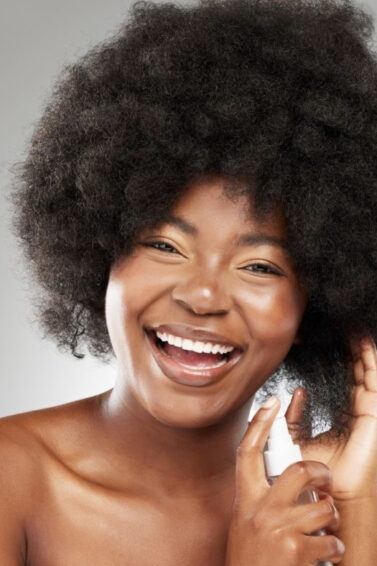Hacks & Inspiration
from Hair Experts at Unilever
Everything You Need to Know About Low Porosity Hair
Kendra | May 19, 2022
Lately there’s been a lot of talk about low porosity hair — but what exactly is it, and what does it have to do with, well, anything? Short answer: It may be the reason why your hair isn’t retaining moisture.
The good thing is, there’s a way to get around this. Instead of trying to figure it all out ourselves, we turned to Unilever Research and Development Senior Manager of Hair Care, Leon-Van Gorkhom, as well as resident hairstylist Bailey Pope, to give us the low down on what low porosity hair really looks and feels like and even asked them to offer up some tips for styling this hair type at home. Read on:
What is Hair Porosity?
“Healthy hair has an undamaged internal cortex and great cuticle with a protective lipid layer. It is water-repellant. When hair gets damaged, especially by chemical and heat treatments, the protective layer is removed, the cuticle layers get lifted and erode, the internal protein structure gets damaged and protein leaches out. This makes the hair ‘porous,’ it will no longer be water repellant. It absorbs water quickly.” Says Leon-Van Gorkhom. Low porosity hair, therefore, is not porous; it’s not damaged.
How do you test for low porosity hair at home?
To assess your hair at home, here’s a little science project for you: snip a piece of hair (don’t worry, one strand won’t hurt) and place it into a glass of water. Now, does it sink or float after about a minute or two? If it’s swimming around at the top, you, my friend, have low porosity hair. “Technically all hair will absorb water when immersed during your shower, but it happens at different rates,” explains Gorkhom.
Should one curate a specific wash and care routine?
According to Gorkhom, “Low porosity is hair that is in relatively good condition and therefore does not need the same conditioning power as high porosity hair.”
Tips for styling low porosity hair
According to Bailey Pope, “The cuticle of low porosity hair is typically smoother than more porous strands. However, low porosity can exist on any texture (straight/curly, fine/textured). The main thing to understand is that it doesn’t soak up moisture as much as higher porosity hair. It’s also much slicker, meaning it can be harder to get hold and volume due to lack of friction on the hair surface.”
PRODUCT
When styling your hair, look for products that match your hair type. For volume, make sure your products a) add volume, and b) you guessed it, add moisture. Our pick: Dove Oxygen Moisture Shampoo and Dove Oxygen Moisture Conditioner.
Products You Might Also Like
Our Tips & Advice
- slide 1
- slide 2
- slide 3
- slide 4
- slide 5
- slide 6
- slide 7
- slide 8
- slide 9
- slide 10





















